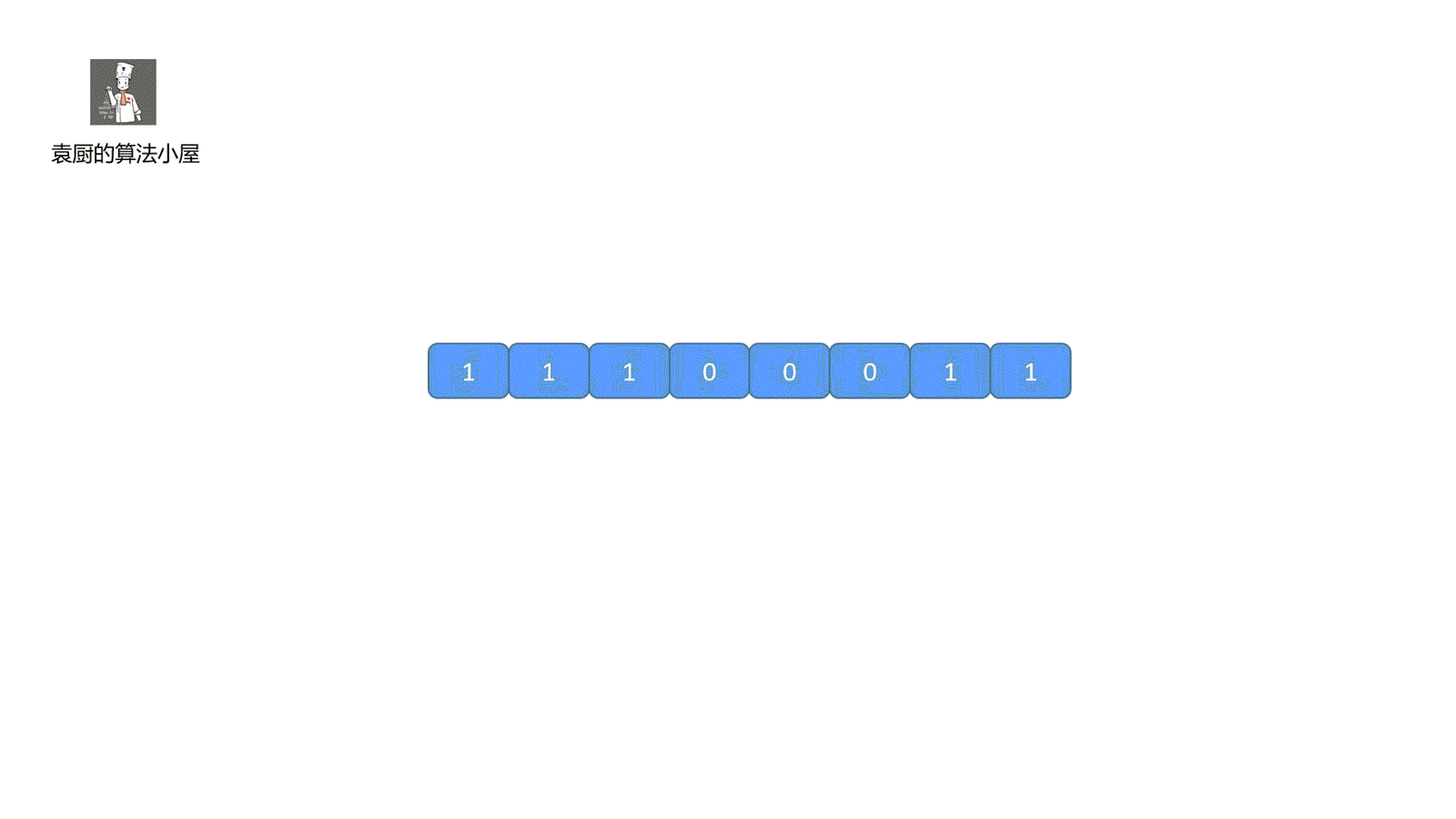mirror of
https://github.com/chefyuan/algorithm-base.git
synced 2024-11-01 09:43:38 +00:00
85 lines
2.6 KiB
Markdown
85 lines
2.6 KiB
Markdown
## **leetcode 485 最大连续 1 的个数**
|
||
|
||
给定一个二进制数组, 计算其中最大连续1的个数。
|
||
|
||
示例 1:
|
||
|
||
> 输入: [1,1,0,1,1,1]
|
||
> 输出: 3
|
||
> 解释: 开头的两位和最后的三位都是连续1,所以最大连续1的个数是 3.
|
||
|
||
我的这个方法比较奇怪,但是效率还可以,战胜了 100% , 尽量减少了 Math.max()的使用,我们来看一下具体思路,利用 right 指针进行探路,如果遇到 1 则继续走,遇到零时则停下,求当前 1 的个数。
|
||
|
||
这时我们可以通过 right - left 得到 1 的 个数,因为此时我们的 right 指针指在 0 处,所以不需要和之前一样通过 right - left + 1 获得窗口长度。
|
||
|
||
然后我们再使用 while 循环,遍历完为 0 的情况,跳到下一段为 1 的情况,然后移动 left 指针。 left = right,站在同一起点,继续执行上诉过程。
|
||
|
||
下面我们通过一个视频模拟代码执行步骤大家一下就能搞懂了。
|
||
|
||

|
||
|
||
|
||
|
||
|
||
|
||
下面我们直接看代码吧
|
||
|
||
```java
|
||
class Solution {
|
||
public int findMaxConsecutiveOnes(int[] nums) {
|
||
|
||
int len = nums.length;
|
||
int left = 0, right = 0;
|
||
int maxcount = 0;
|
||
|
||
while (right < len) {
|
||
if (nums[right] == 1) {
|
||
right++;
|
||
continue;
|
||
}
|
||
//保存最大值
|
||
maxcount = Math.max(maxcount, right - left);
|
||
//跳过 0 的情况
|
||
while (right < len && nums[right] == 0) {
|
||
right++;
|
||
}
|
||
//同一起点继续遍历
|
||
left = right;
|
||
}
|
||
return Math.max(maxcount, right-left);
|
||
|
||
}
|
||
}
|
||
```
|
||
|
||
|
||
|
||
刚才的效率虽然相对高一些,但是代码不够优美,欢迎各位改进,下面我们说一下另外一种情况,一个特别容易理解的方法。
|
||
|
||
我们通过计数器计数 连续 1 的个数,当 nums[i] == 1 时,count++,nums[i] 为 0 时,则先保存最大 count,再将 count 清零,因为我们需要的是连续的 1 的个数,所以需要清零。
|
||
|
||
好啦,下面我们直接看代码吧。
|
||
|
||
```java
|
||
class Solution {
|
||
public int findMaxConsecutiveOnes(int[] nums) {
|
||
|
||
int count = 0;
|
||
int maxcount = 0;
|
||
|
||
for (int i = 0; i < nums.length; ++i) {
|
||
if (nums[i] == 1) {
|
||
count++;
|
||
//这里可以改成 while
|
||
} else {
|
||
maxcount = Math.max(maxcount,count);
|
||
count = 0;
|
||
}
|
||
}
|
||
return Math.max(count,maxcount);
|
||
|
||
}
|
||
}
|
||
```
|
||
|